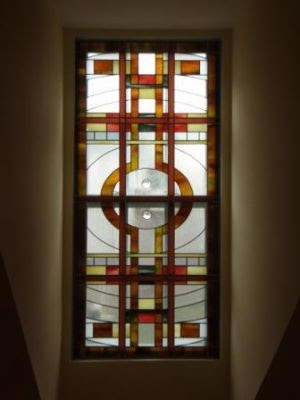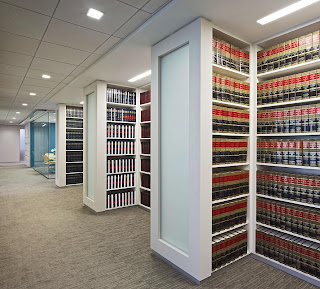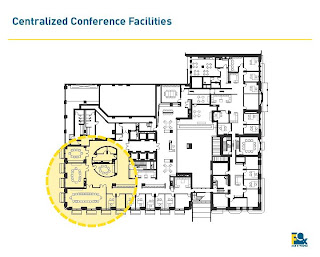
In 2005, when entrepreneur and franchise expert Alex McKeague eyed the D.C. market’s wide world of art and design, packing along an artist wife raised the bar on what they could expect. Buoyed by an engineer father-in-law who called stained glass-making, which was his avocation, “the great melding of engineering and art,” McKeague and wife Lisa set their conceptual sails on a course toward Washington’s competitive, custom design market, with results that have brought light, elegance, privacy and even security to their customers.  With SGO Designer Glass among the top 500 franchises on the entrepreneur.com website then and now, McKeague, who’d owned several restaurant and retail franchises in the past, recalled an SGO entity in Crofton, Md. (now closed) that had done some work in one of his businesses. "I remembered they did great work and it was a great product,” McKeague said. Following some prodigious market research, he and Lisa found themselves asking the fundamental questions, “Could we see ourselves doing this, and as customers, could we see ourselves buying it?”
SGO, the acronym for stained glass overlay, is a specialized product that applies 21st century technology to traditional stained glass aesthetics, producing a product that is ANSI-(American National Standards Institute) rated for safety. Where creating a traditional stained glass product today requires sandwiching it in betwe
With SGO Designer Glass among the top 500 franchises on the entrepreneur.com website then and now, McKeague, who’d owned several restaurant and retail franchises in the past, recalled an SGO entity in Crofton, Md. (now closed) that had done some work in one of his businesses. "I remembered they did great work and it was a great product,” McKeague said. Following some prodigious market research, he and Lisa found themselves asking the fundamental questions, “Could we see ourselves doing this, and as customers, could we see ourselves buying it?”
SGO, the acronym for stained glass overlay, is a specialized product that applies 21st century technology to traditional stained glass aesthetics, producing a product that is ANSI-(American National Standards Institute) rated for safety. Where creating a traditional stained glass product today requires sandwiching it in betwe en two pieces of tempered glass for safety, replacing doors or windows with the product in the process, the newer overlay process – which includes taking colors, textures, lead and bevels and applying them to the glass of existing doors or windows – is achieved at far less expense to the customer and with spectacular results. Additionally, if someone moves, the glass can more easily be removed, packaged and shipped to the new address, leaving behind a functioning window or door.
With the Libyan Embassy among their early customers and 22 individual 4x10-ft.windows to design, the McKeagues recalled they were part of a design conversation where their contact initially wanted an oasis pattern in one place, a wrought iron swirl in others and examples of Libyan art reflected in still others. “Inevitably they ended up getting an interior designer to take over,” McKeague said, noting the designer scrapped everything and started anew, exploring whatever designs their young company had done to date and going from there. “We put together a cohesive design that incorporated pieces of everything they wanted, and one that could be carried throughout the embassy,” McKeague said of the two-year process from initial conversations to finish. “Our typical turnaround time on most projects is 6-8 weeks.”
Shining Through
Crediting wife Lisa with unparalleled diplomacy in all matters, the candid McKeague said their business is about transparency (no pun intended) to the customer’s tastes and desires. “In the beginning, we got too emotionally involved with the pieces themselves, so when a customer wanted to make changes, we’d think that’s not what we wanted to do,” he recalled. Employing their own website, and also a master SGO Designer Glass site with 1,400 design images, the McKeagues’ customers participate in a discovery process that includes CAD drawings applied to actual photographs of the intended window or door space and thousands of colors manipulated to achieve a variety of effects. When a decision is made, custom-cut tempered pieces of glass are ordered, along with the different colors and textures, with Lisa cutting and bonding them to the glass. “To build in the glass can take four weeks, just prior to installation,” McKeague explained.
Gilding the Castle
en two pieces of tempered glass for safety, replacing doors or windows with the product in the process, the newer overlay process – which includes taking colors, textures, lead and bevels and applying them to the glass of existing doors or windows – is achieved at far less expense to the customer and with spectacular results. Additionally, if someone moves, the glass can more easily be removed, packaged and shipped to the new address, leaving behind a functioning window or door.
With the Libyan Embassy among their early customers and 22 individual 4x10-ft.windows to design, the McKeagues recalled they were part of a design conversation where their contact initially wanted an oasis pattern in one place, a wrought iron swirl in others and examples of Libyan art reflected in still others. “Inevitably they ended up getting an interior designer to take over,” McKeague said, noting the designer scrapped everything and started anew, exploring whatever designs their young company had done to date and going from there. “We put together a cohesive design that incorporated pieces of everything they wanted, and one that could be carried throughout the embassy,” McKeague said of the two-year process from initial conversations to finish. “Our typical turnaround time on most projects is 6-8 weeks.”
Shining Through
Crediting wife Lisa with unparalleled diplomacy in all matters, the candid McKeague said their business is about transparency (no pun intended) to the customer’s tastes and desires. “In the beginning, we got too emotionally involved with the pieces themselves, so when a customer wanted to make changes, we’d think that’s not what we wanted to do,” he recalled. Employing their own website, and also a master SGO Designer Glass site with 1,400 design images, the McKeagues’ customers participate in a discovery process that includes CAD drawings applied to actual photographs of the intended window or door space and thousands of colors manipulated to achieve a variety of effects. When a decision is made, custom-cut tempered pieces of glass are ordered, along with the different colors and textures, with Lisa cutting and bonding them to the glass. “To build in the glass can take four weeks, just prior to installation,” McKeague explained.
Gilding the Castle
 In 2006, a business analysis McKeague instituted of their franchise revealed that 70 percent of their work solved some kind of problem–a privacy issue. McKeague said customers wanted to let in the light, but also obscure the vision. To that end, when a real estate agent purchased a home on the water in Davidson, Md., there were no neighbors but the situation evolved unfavorably to include what the agent called an unattractive house, according to McKeague, visible outside her bathroom window. Concerned about privacy and resale issues, SGO was commissioned for a stained glass overlay that was at once elegant yet significantly camouflaged the structure next door, obscuring the view from the outside in as well.
In Potomac, Md., a therapist who practiced out of her home and was partial to all things art nouveau professed she couldn’t find a traditional piece of stained glass she really liked. “We came up with an overlay design t
In 2006, a business analysis McKeague instituted of their franchise revealed that 70 percent of their work solved some kind of problem–a privacy issue. McKeague said customers wanted to let in the light, but also obscure the vision. To that end, when a real estate agent purchased a home on the water in Davidson, Md., there were no neighbors but the situation evolved unfavorably to include what the agent called an unattractive house, according to McKeague, visible outside her bathroom window. Concerned about privacy and resale issues, SGO was commissioned for a stained glass overlay that was at once elegant yet significantly camouflaged the structure next door, obscuring the view from the outside in as well.
In Potomac, Md., a therapist who practiced out of her home and was partial to all things art nouveau professed she couldn’t find a traditional piece of stained glass she really liked. “We came up with an overlay design t hat was so intricate,” McKeague said of the two 6x54-inch entryway sidelights that, because of their design, provided great privacy, "something this delicate would fall apart using traditional stained glass.” To assist the therapist with security issues, two discrete clear glass eye holes precisely at her own eye level were inserted, allowing her to see out without opening the door. In fact, in the safety arena, McKeague’s projections for his SGO glass in commercial enterprises include using it as a smash-and-grab deterrent. “When we bond the colors and textures, we have that ANSI rating for safety glass,” he explained. “If the glass is smashed, everything holds together.”
With many hundreds of projects in the greater D.C. area that include residential, religious, institutional and commercial designs, McKeague indicated the market for SGO Designer Glass applications is only as limited as one’s imagination. “Whatever we create is actually what the customer creates,” McKeague said. “We are only the vehicle that gets them there.”
hat was so intricate,” McKeague said of the two 6x54-inch entryway sidelights that, because of their design, provided great privacy, "something this delicate would fall apart using traditional stained glass.” To assist the therapist with security issues, two discrete clear glass eye holes precisely at her own eye level were inserted, allowing her to see out without opening the door. In fact, in the safety arena, McKeague’s projections for his SGO glass in commercial enterprises include using it as a smash-and-grab deterrent. “When we bond the colors and textures, we have that ANSI rating for safety glass,” he explained. “If the glass is smashed, everything holds together.”
With many hundreds of projects in the greater D.C. area that include residential, religious, institutional and commercial designs, McKeague indicated the market for SGO Designer Glass applications is only as limited as one’s imagination. “Whatever we create is actually what the customer creates,” McKeague said. “We are only the vehicle that gets them there.”
 With SGO Designer Glass among the top 500 franchises on the entrepreneur.com website then and now, McKeague, who’d owned several restaurant and retail franchises in the past, recalled an SGO entity in Crofton, Md. (now closed) that had done some work in one of his businesses. "I remembered they did great work and it was a great product,” McKeague said. Following some prodigious market research, he and Lisa found themselves asking the fundamental questions, “Could we see ourselves doing this, and as customers, could we see ourselves buying it?”
SGO, the acronym for stained glass overlay, is a specialized product that applies 21st century technology to traditional stained glass aesthetics, producing a product that is ANSI-(American National Standards Institute) rated for safety. Where creating a traditional stained glass product today requires sandwiching it in betwe
With SGO Designer Glass among the top 500 franchises on the entrepreneur.com website then and now, McKeague, who’d owned several restaurant and retail franchises in the past, recalled an SGO entity in Crofton, Md. (now closed) that had done some work in one of his businesses. "I remembered they did great work and it was a great product,” McKeague said. Following some prodigious market research, he and Lisa found themselves asking the fundamental questions, “Could we see ourselves doing this, and as customers, could we see ourselves buying it?”
SGO, the acronym for stained glass overlay, is a specialized product that applies 21st century technology to traditional stained glass aesthetics, producing a product that is ANSI-(American National Standards Institute) rated for safety. Where creating a traditional stained glass product today requires sandwiching it in betwe en two pieces of tempered glass for safety, replacing doors or windows with the product in the process, the newer overlay process – which includes taking colors, textures, lead and bevels and applying them to the glass of existing doors or windows – is achieved at far less expense to the customer and with spectacular results. Additionally, if someone moves, the glass can more easily be removed, packaged and shipped to the new address, leaving behind a functioning window or door.
With the Libyan Embassy among their early customers and 22 individual 4x10-ft.windows to design, the McKeagues recalled they were part of a design conversation where their contact initially wanted an oasis pattern in one place, a wrought iron swirl in others and examples of Libyan art reflected in still others. “Inevitably they ended up getting an interior designer to take over,” McKeague said, noting the designer scrapped everything and started anew, exploring whatever designs their young company had done to date and going from there. “We put together a cohesive design that incorporated pieces of everything they wanted, and one that could be carried throughout the embassy,” McKeague said of the two-year process from initial conversations to finish. “Our typical turnaround time on most projects is 6-8 weeks.”
Shining Through
Crediting wife Lisa with unparalleled diplomacy in all matters, the candid McKeague said their business is about transparency (no pun intended) to the customer’s tastes and desires. “In the beginning, we got too emotionally involved with the pieces themselves, so when a customer wanted to make changes, we’d think that’s not what we wanted to do,” he recalled. Employing their own website, and also a master SGO Designer Glass site with 1,400 design images, the McKeagues’ customers participate in a discovery process that includes CAD drawings applied to actual photographs of the intended window or door space and thousands of colors manipulated to achieve a variety of effects. When a decision is made, custom-cut tempered pieces of glass are ordered, along with the different colors and textures, with Lisa cutting and bonding them to the glass. “To build in the glass can take four weeks, just prior to installation,” McKeague explained.
Gilding the Castle
en two pieces of tempered glass for safety, replacing doors or windows with the product in the process, the newer overlay process – which includes taking colors, textures, lead and bevels and applying them to the glass of existing doors or windows – is achieved at far less expense to the customer and with spectacular results. Additionally, if someone moves, the glass can more easily be removed, packaged and shipped to the new address, leaving behind a functioning window or door.
With the Libyan Embassy among their early customers and 22 individual 4x10-ft.windows to design, the McKeagues recalled they were part of a design conversation where their contact initially wanted an oasis pattern in one place, a wrought iron swirl in others and examples of Libyan art reflected in still others. “Inevitably they ended up getting an interior designer to take over,” McKeague said, noting the designer scrapped everything and started anew, exploring whatever designs their young company had done to date and going from there. “We put together a cohesive design that incorporated pieces of everything they wanted, and one that could be carried throughout the embassy,” McKeague said of the two-year process from initial conversations to finish. “Our typical turnaround time on most projects is 6-8 weeks.”
Shining Through
Crediting wife Lisa with unparalleled diplomacy in all matters, the candid McKeague said their business is about transparency (no pun intended) to the customer’s tastes and desires. “In the beginning, we got too emotionally involved with the pieces themselves, so when a customer wanted to make changes, we’d think that’s not what we wanted to do,” he recalled. Employing their own website, and also a master SGO Designer Glass site with 1,400 design images, the McKeagues’ customers participate in a discovery process that includes CAD drawings applied to actual photographs of the intended window or door space and thousands of colors manipulated to achieve a variety of effects. When a decision is made, custom-cut tempered pieces of glass are ordered, along with the different colors and textures, with Lisa cutting and bonding them to the glass. “To build in the glass can take four weeks, just prior to installation,” McKeague explained.
Gilding the Castle
 In 2006, a business analysis McKeague instituted of their franchise revealed that 70 percent of their work solved some kind of problem–a privacy issue. McKeague said customers wanted to let in the light, but also obscure the vision. To that end, when a real estate agent purchased a home on the water in Davidson, Md., there were no neighbors but the situation evolved unfavorably to include what the agent called an unattractive house, according to McKeague, visible outside her bathroom window. Concerned about privacy and resale issues, SGO was commissioned for a stained glass overlay that was at once elegant yet significantly camouflaged the structure next door, obscuring the view from the outside in as well.
In Potomac, Md., a therapist who practiced out of her home and was partial to all things art nouveau professed she couldn’t find a traditional piece of stained glass she really liked. “We came up with an overlay design t
In 2006, a business analysis McKeague instituted of their franchise revealed that 70 percent of their work solved some kind of problem–a privacy issue. McKeague said customers wanted to let in the light, but also obscure the vision. To that end, when a real estate agent purchased a home on the water in Davidson, Md., there were no neighbors but the situation evolved unfavorably to include what the agent called an unattractive house, according to McKeague, visible outside her bathroom window. Concerned about privacy and resale issues, SGO was commissioned for a stained glass overlay that was at once elegant yet significantly camouflaged the structure next door, obscuring the view from the outside in as well.
In Potomac, Md., a therapist who practiced out of her home and was partial to all things art nouveau professed she couldn’t find a traditional piece of stained glass she really liked. “We came up with an overlay design t hat was so intricate,” McKeague said of the two 6x54-inch entryway sidelights that, because of their design, provided great privacy, "something this delicate would fall apart using traditional stained glass.” To assist the therapist with security issues, two discrete clear glass eye holes precisely at her own eye level were inserted, allowing her to see out without opening the door. In fact, in the safety arena, McKeague’s projections for his SGO glass in commercial enterprises include using it as a smash-and-grab deterrent. “When we bond the colors and textures, we have that ANSI rating for safety glass,” he explained. “If the glass is smashed, everything holds together.”
With many hundreds of projects in the greater D.C. area that include residential, religious, institutional and commercial designs, McKeague indicated the market for SGO Designer Glass applications is only as limited as one’s imagination. “Whatever we create is actually what the customer creates,” McKeague said. “We are only the vehicle that gets them there.”
hat was so intricate,” McKeague said of the two 6x54-inch entryway sidelights that, because of their design, provided great privacy, "something this delicate would fall apart using traditional stained glass.” To assist the therapist with security issues, two discrete clear glass eye holes precisely at her own eye level were inserted, allowing her to see out without opening the door. In fact, in the safety arena, McKeague’s projections for his SGO glass in commercial enterprises include using it as a smash-and-grab deterrent. “When we bond the colors and textures, we have that ANSI rating for safety glass,” he explained. “If the glass is smashed, everything holds together.”
With many hundreds of projects in the greater D.C. area that include residential, religious, institutional and commercial designs, McKeague indicated the market for SGO Designer Glass applications is only as limited as one’s imagination. “Whatever we create is actually what the customer creates,” McKeague said. “We are only the vehicle that gets them there.”









 The
The 







 e place is open and bright, with beautiful blondish hardwood floors and exposed pitted brick. Those curved, wraparound windows face west onto 16th, and are right off an italian-style gourmet kitchen, outfitted with Miele and Bosch appliances that are more finely engineered than most cars. Even if you can't cook, you could store shoes in them or something. There's a gas fireplace in the living area, custom tiled baths, and the whole unit wired for ipods and surround sound. They've really thought of everything.
e place is open and bright, with beautiful blondish hardwood floors and exposed pitted brick. Those curved, wraparound windows face west onto 16th, and are right off an italian-style gourmet kitchen, outfitted with Miele and Bosch appliances that are more finely engineered than most cars. Even if you can't cook, you could store shoes in them or something. There's a gas fireplace in the living area, custom tiled baths, and the whole unit wired for ipods and surround sound. They've really thought of everything.
























